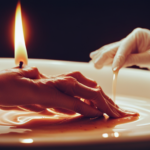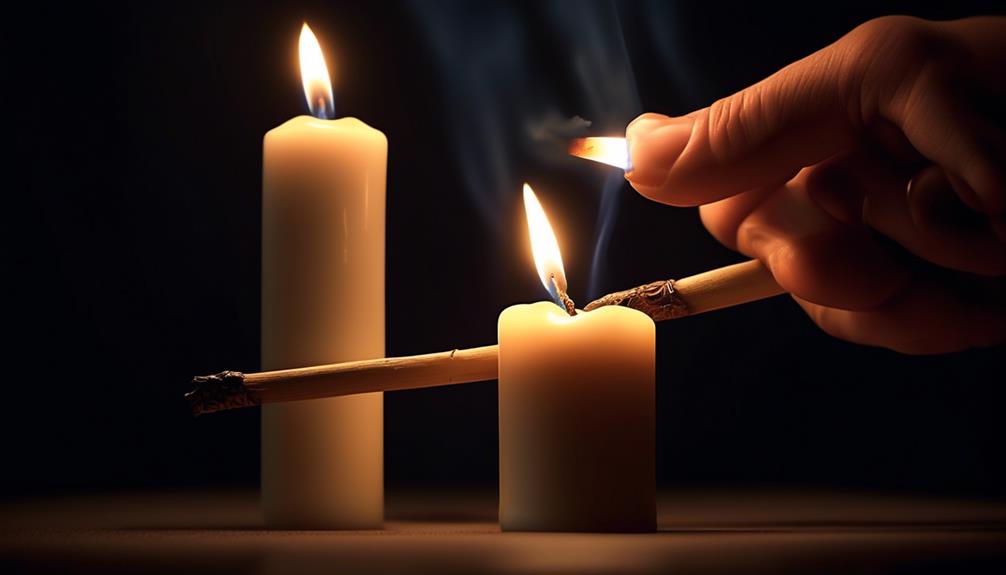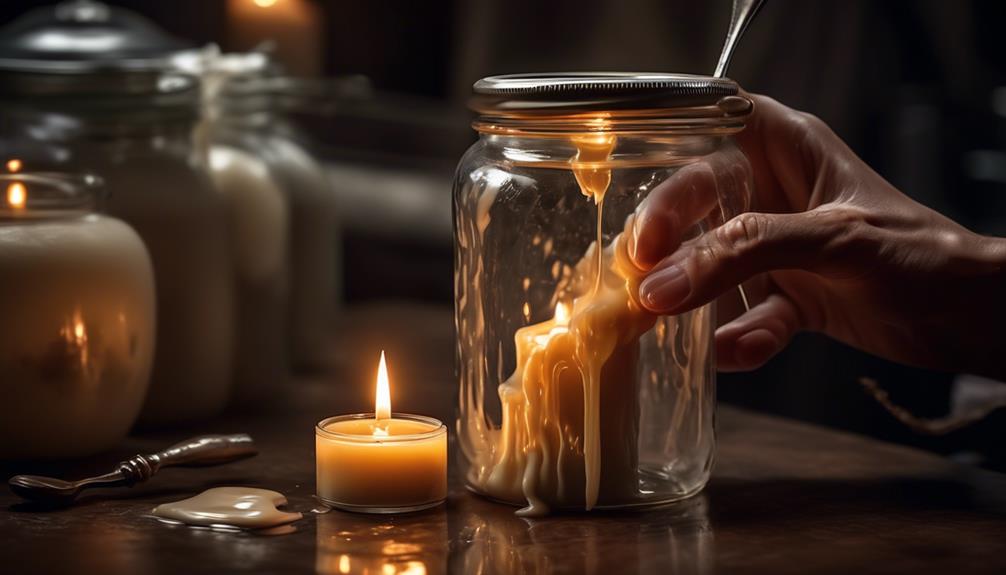You accidentally spilled candle wax on your beloved sheets. What a mess, right? But don’t fret, we’ve compiled the ultimate guide on how to remove candle wax from sheets.
We, the masters of stain removal, have gathered the necessary materials and perfected the techniques to save your beloved bedding. No need to panic or fret, my friends.
With our step-by-step instructions, you’ll be able to scrape, melt, blot, and wash away that stubborn wax. Get ready to conquer this sticky situation with our expert advice. Let’s dive in and bid farewell to those waxy nightmares!
Key Takeaways
- The heat and blot method can be used to remove candle wax from sheets by placing a cloth or paper towel over the wax stain and gently pressing with a warm iron to transfer the melted wax onto the cloth.
- Freezing and scraping can also be effective by sealing ice cubes in a plastic bag, applying the bag to the wax stain, allowing the wax to freeze and harden, and then scraping off the wax with a plastic scraper or blunt knife.
- Using a hairdryer to melt the wax directly and then blotting it away can be a quick and easy method for removing wax from sheets, but precautions should be taken to prevent future wax spills and avoid heat damage.
- Alternative methods such as using protective covers on surfaces and being cautious when using a hairdryer can also help in removing candle wax from sheets.
Gather Necessary Materials
We will gather the necessary materials to remove candle wax from sheets.
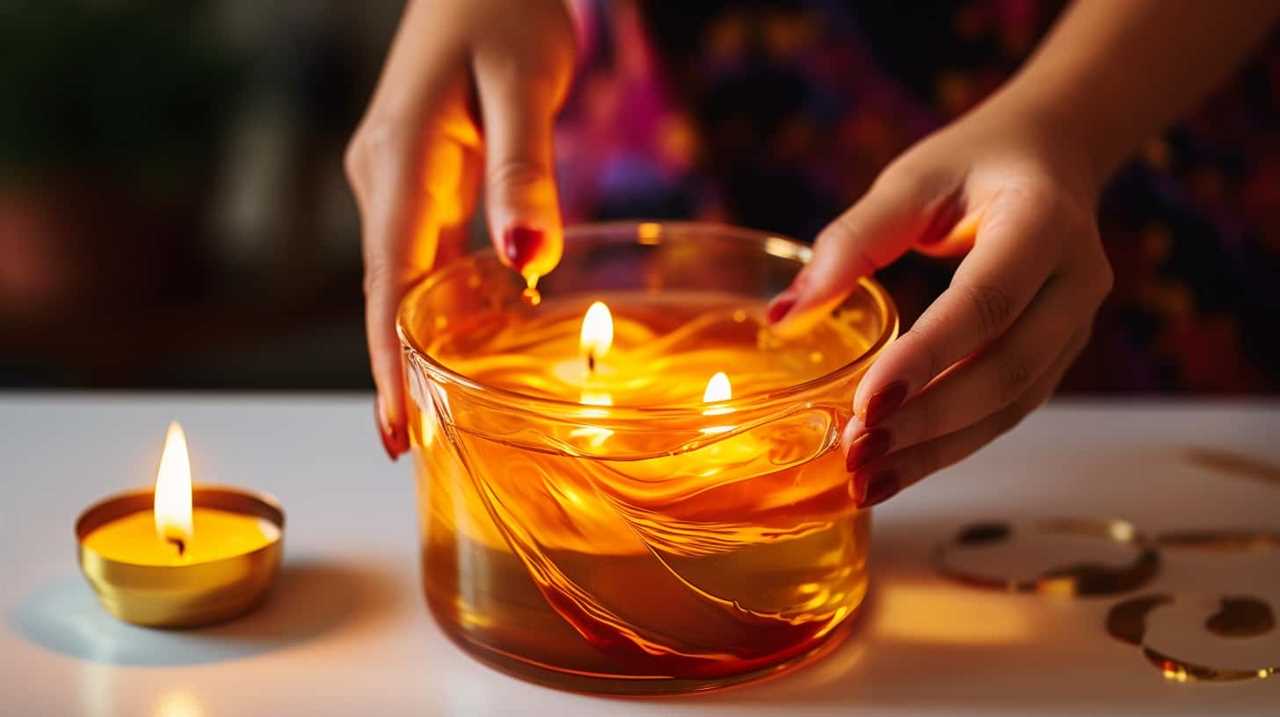
The first step is to prepare the materials needed for this task. You’ll need a few basic items, which can be easily found at home or purchased from a local store. The most important tool is a butter knife or a spoon, which will be used to scrape off the excess wax. Additionally, you’ll need a clean white cloth or paper towel and an iron. If you don’t have an iron, you can use a hairdryer as an alternative. These materials are essential for successfully removing candle wax from sheets.
Now that we’ve gathered the necessary materials, let’s move on to the next step: scraping off the excess wax.
Scrape off Excess Wax
Now that we’ve gathered the necessary materials, it’s time to tackle the next step in getting candle wax out of sheets – scraping off the excess wax.
This step is crucial in removing as much wax as possible before moving on to the next method. By using heat and blotting or freezing and scraping, we can effectively remove the majority of the wax from the fabric, making the cleaning process much easier.

Heat and Blot
After heating the wax, we can easily scrape off any excess using a blunt knife or spoon.
However, if there’s still some residue left on the sheets, we can employ the heat and blot method to remove it completely.
To do this, place a clean white cloth or paper towel over the wax stain.
Next, using a warm iron set on low heat, gently press the cloth or paper towel over the stain.
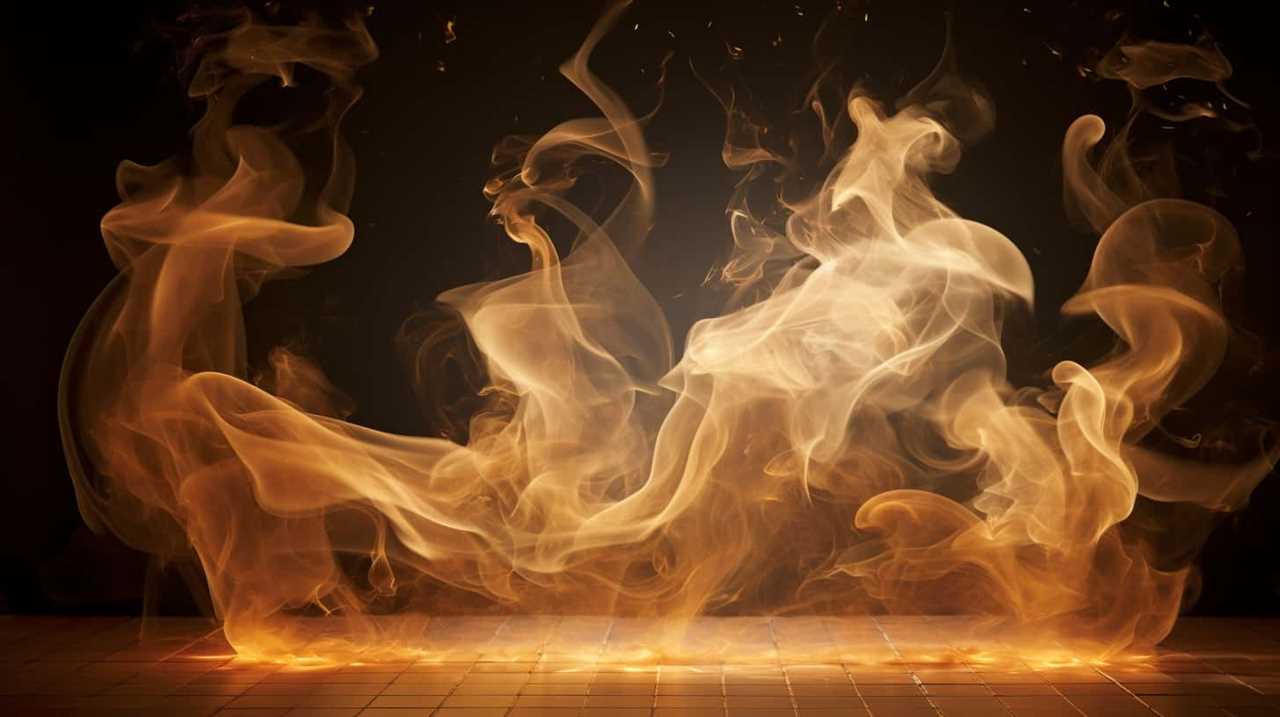
The heat will cause the remaining wax to melt and transfer onto the cloth.
Keep moving the cloth or paper towel to a clean spot and continue blotting until no more wax transfers.
Be careful not to apply too much heat or press too hard to avoid damaging the fabric.
Freeze and Scrape
To begin removing excess wax from sheets, first, gather a few ice cubes and a plastic bag. This freezing technique is an effective way to harden the wax, making it easier to scrape off. Here are some tips to help you successfully freeze and scrape candle wax from your sheets:
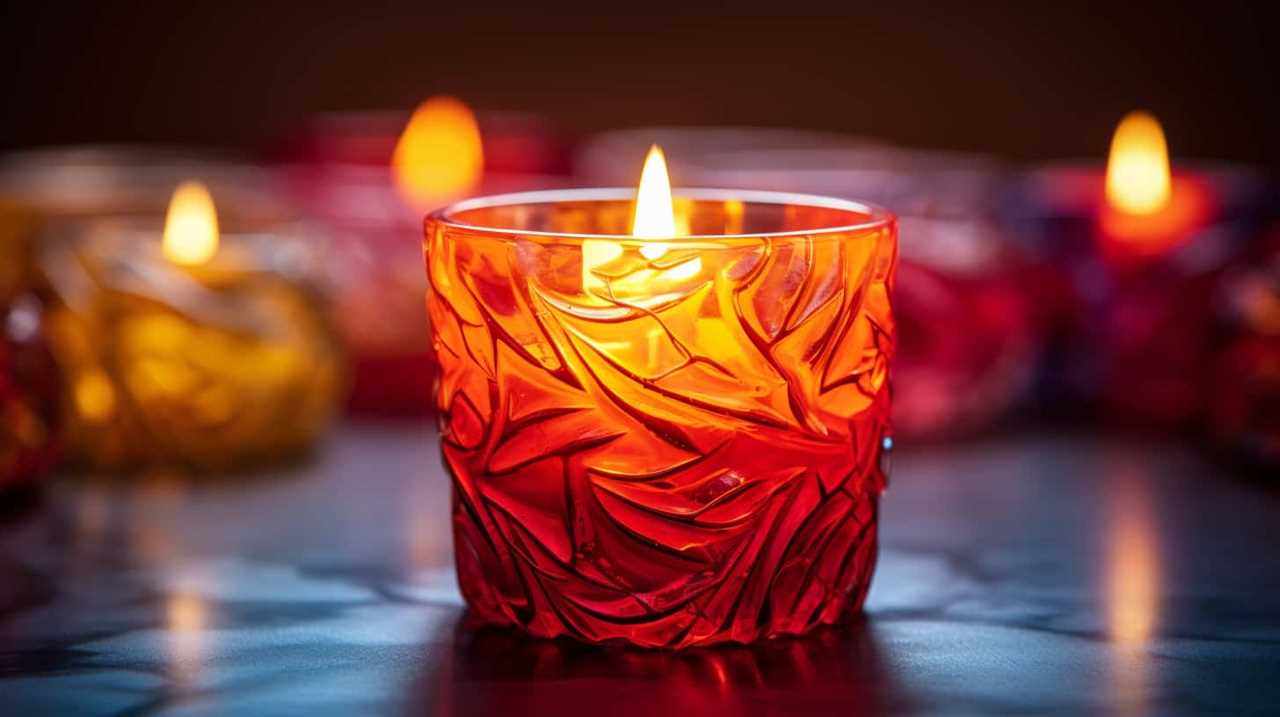
- Place the ice cubes in the plastic bag and seal it tightly.
- Apply the plastic bag filled with ice directly to the wax stain on the sheet.
- Leave the bag on the wax for a few minutes to allow it to freeze and harden.
- Once the wax is hardened, use a plastic scraper or a blunt knife to gently scrape off the wax from the fabric.
- Be careful not to damage the sheet fibers while scraping.
- If needed, repeat the process until all the wax is removed.
Compared to heating techniques, freezing and scraping is a safer and more controlled method for wax removal, minimizing the risk of spreading or embedding the wax deeper into the sheet fibers.
Use a Hairdryer to Melt the Wax
Now let’s explore some alternative methods for removing candle wax from sheets. Besides scraping off the excess wax, another effective technique is to use a hairdryer to melt the remaining wax. By applying heat directly to the wax, it will become liquid and can be easily blotted away with a paper towel or cloth.
This method is quick and efficient, but it’s important to take precautions to prevent future wax spills, such as using candle holders or placing a protective barrier underneath the candles.
Alternative Wax Removal Methods
One effective method for removing candle wax from sheets is by using a hairdryer to melt the wax. This alternative wax removal method provides a convenient and efficient way to tackle stubborn wax stains.

Here are three reasons why you should consider using a hairdryer for candle wax removal:
- Quick and easy: By applying heat to the wax stain, the hairdryer melts the wax, allowing it to be easily wiped away. This method saves time and effort compared to other removal techniques.
- Safe for delicate fabrics: The hairdryer’s gentle heat minimizes the risk of damaging delicate sheets. It’s a suitable option for various materials, including cotton, linen, and silk.
- Versatile and accessible: Unlike specialized tools like heat guns, hairdryers are readily available in most households. This makes it a practical and accessible solution for candle wax stain removal.
Preventing Wax Spills Again
To prevent future wax spills, we can use a hairdryer to melt the wax and make it easier to clean up. When a wax spill occurs, quickly grab a hairdryer and set it on the lowest heat setting. Hold the hairdryer about six inches away from the spilled wax and slowly move it back and forth. The hot air from the hairdryer will melt the wax, allowing it to be absorbed by a paper towel or cloth.
Remember to be cautious when using the hairdryer and avoid getting too close to avoid any heat damage. Additionally, to further prevent future spills, consider using protective covers on your surfaces, such as tablecloths or placemats, to catch any wax that may drip or spill. These covers can be easily cleaned or replaced, saving your sheets from potential damage.
Blot the Wax With a Paper Towel
We carefully blot the candle wax with a paper towel to remove as much of it as possible from the sheets. Here are some tips to help you effectively remove the wax using this method:

- Press gently: Apply light pressure with the paper towel to avoid pushing the wax further into the fabric.
- Change the paper towel: As the wax is absorbed, it can transfer back onto the sheets. Replace the paper towel with a clean one when needed.
- Use a hairdryer: If the wax is still stubborn, you can try the hairdryer technique. Set the hairdryer to a low heat setting and aim it at the wax. As the wax melts, blot it with a paper towel.
If blotting the wax with a paper towel doesn’t fully remove it, there are alternative wax removal options you can consider:
- Freezing method: Place the sheets in a plastic bag and put them in the freezer for a couple of hours. Once the wax is frozen, gently scrape it off with a dull knife or credit card.
- Ironing method: Lay a clean cloth over the wax and set your iron to a low heat setting. Press and move the iron over the cloth, allowing the wax to transfer onto it.
Apply Rubbing Alcohol
Now that we’ve blotted the wax with a paper towel, it’s time to move on to the next step: applying rubbing alcohol.
Rubbing alcohol is an effective solvent that can help break down the wax and remove it from the sheets.
There are a few different methods we can use to apply the rubbing alcohol, including using a cotton ball or a clean cloth.

Let’s explore these points in more detail to successfully remove the candle wax from our sheets.
Heat and Scrape
With the use of rubbing alcohol, we can effectively employ the heat and scrape method to remove candle wax from sheets. This technique is highly effective and requires minimal effort. Here’s how you can do it:
- Place a clean white cloth or paper towel over the wax stain.
- Set your iron to a low heat setting and gently iron over the cloth. The heat will melt the wax, causing it to transfer onto the cloth.
- Continue ironing until all the wax has been absorbed by the cloth.
If any residue remains, dampen a clean cloth with rubbing alcohol and gently rub the area in a circular motion. The alcohol will break down the wax and make it easier to remove.
- Repeat this process until the wax is completely gone.
Remember to always test the rubbing alcohol on a small, inconspicuous area of the sheet before applying it to the wax stain to ensure it doesn’t cause any damage.
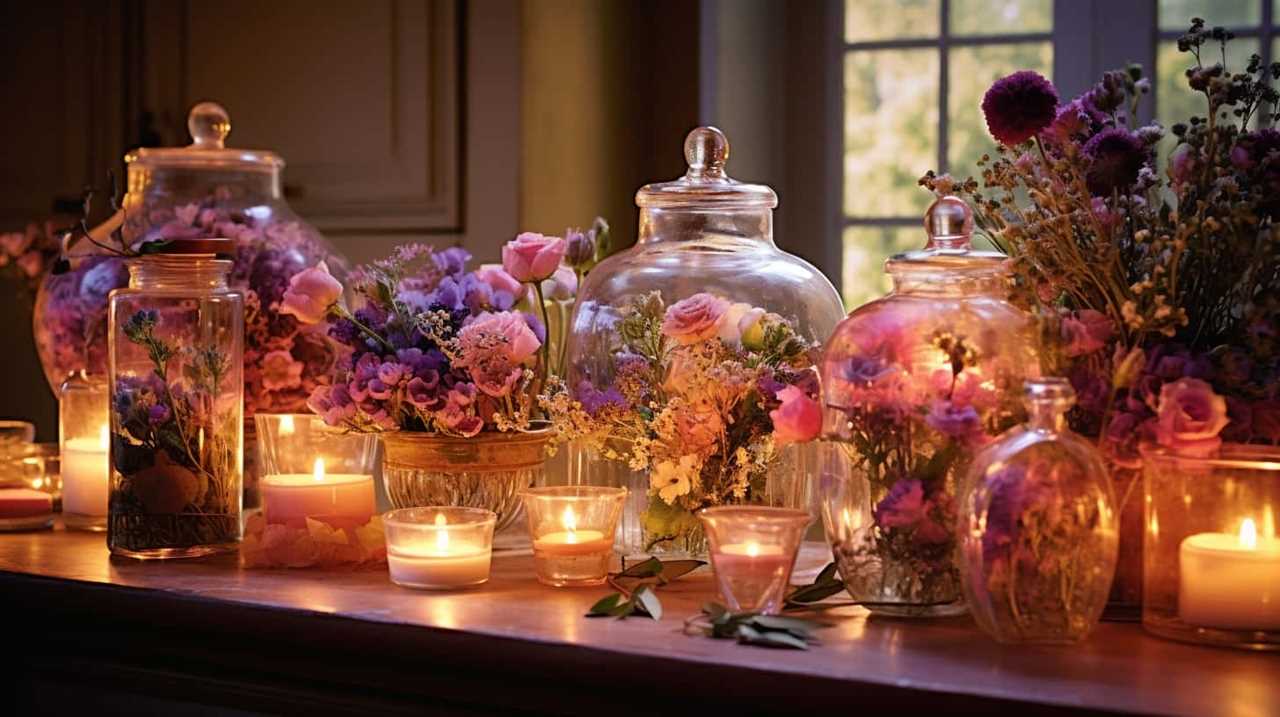
Freeze and Chip
To remove candle wax from sheets using the freeze and chip method, we can apply rubbing alcohol for an effective solution. When candle wax drips onto sheets, it can leave stubborn stains if not treated promptly and properly.
By freezing the wax, it becomes brittle and easier to remove. Place a few ice cubes in a plastic bag and apply it to the wax until it hardens. Next, scrape off the hardened wax gently with a butter knife or a credit card.
However, if there’s still some residue left, rubbing alcohol can be used as an alternative cleaning method. Dampen a clean cloth with rubbing alcohol and dab it onto the remaining wax stain. Blot the area until the wax is completely removed, and then launder the sheets as usual to prevent any lingering stains.
Iron and Absorb
We can effectively remove candle wax from sheets by ironing and absorbing it using rubbing alcohol. Here are some ironing techniques and absorbent materials that can help you achieve this:
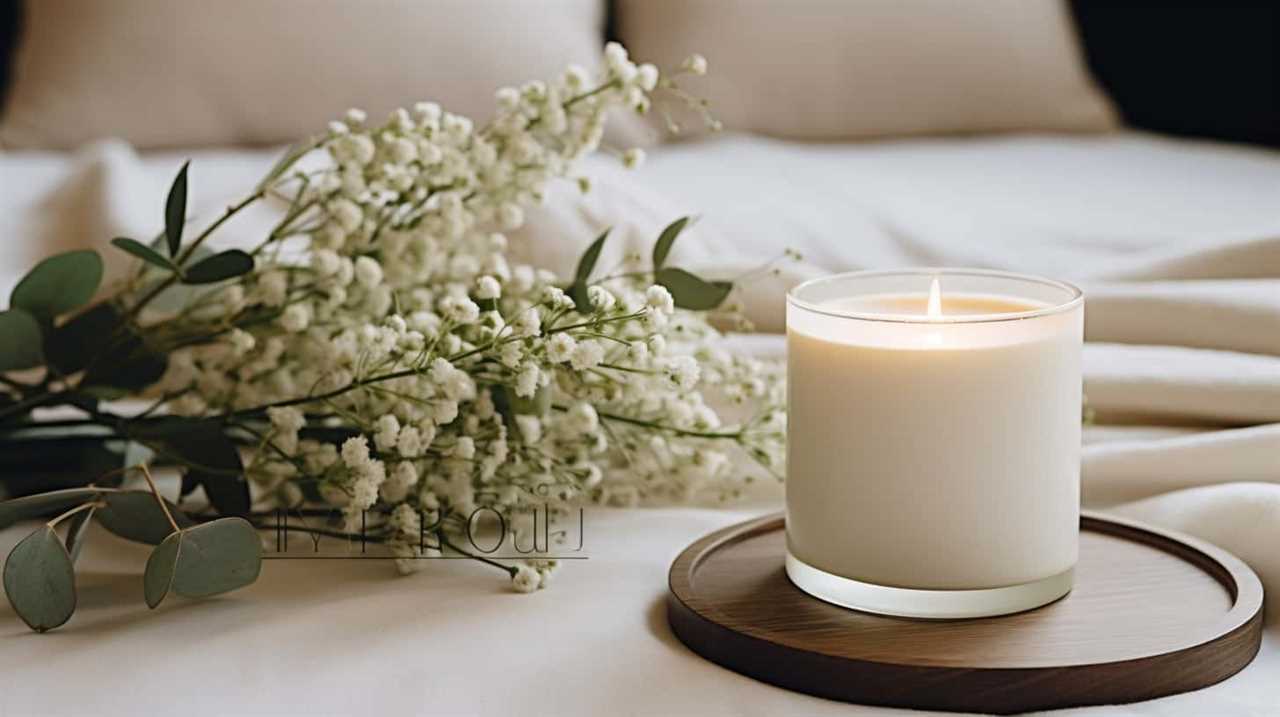
- Ironing Techniques:
- Set your iron to a low heat setting to avoid scorching the fabric.
- Place a clean white cloth over the wax to protect the iron and prevent any transfer of color.
- Gently press the iron onto the cloth, moving it in circular motions to gradually melt the wax.
- Continue ironing until the wax transfers onto the cloth.
- Absorbent Materials:
- Use paper towels or brown paper bags to absorb the melted wax.
- Press the absorbent material onto the wax, allowing it to soak up as much as possible.
- Replace the paper towels or bags as needed until the wax is fully absorbed.
By following these ironing techniques and using absorbent materials, you’ll be able to effectively remove candle wax from your sheets.
Now, let’s move on to the next section and learn how to use an iron to remove the wax.
Use an Iron to Remove the Wax
One effective method for removing candle wax from sheets is by using an iron. This technique is especially useful when the wax has hardened and can’t be easily scraped off.
To begin, place a clean, white cloth over the wax stain. Then, set your iron to a low heat setting without steam. Gently press the iron onto the cloth-covered wax stain and move it in a circular motion. The heat from the iron will melt the wax, allowing it to transfer onto the cloth.
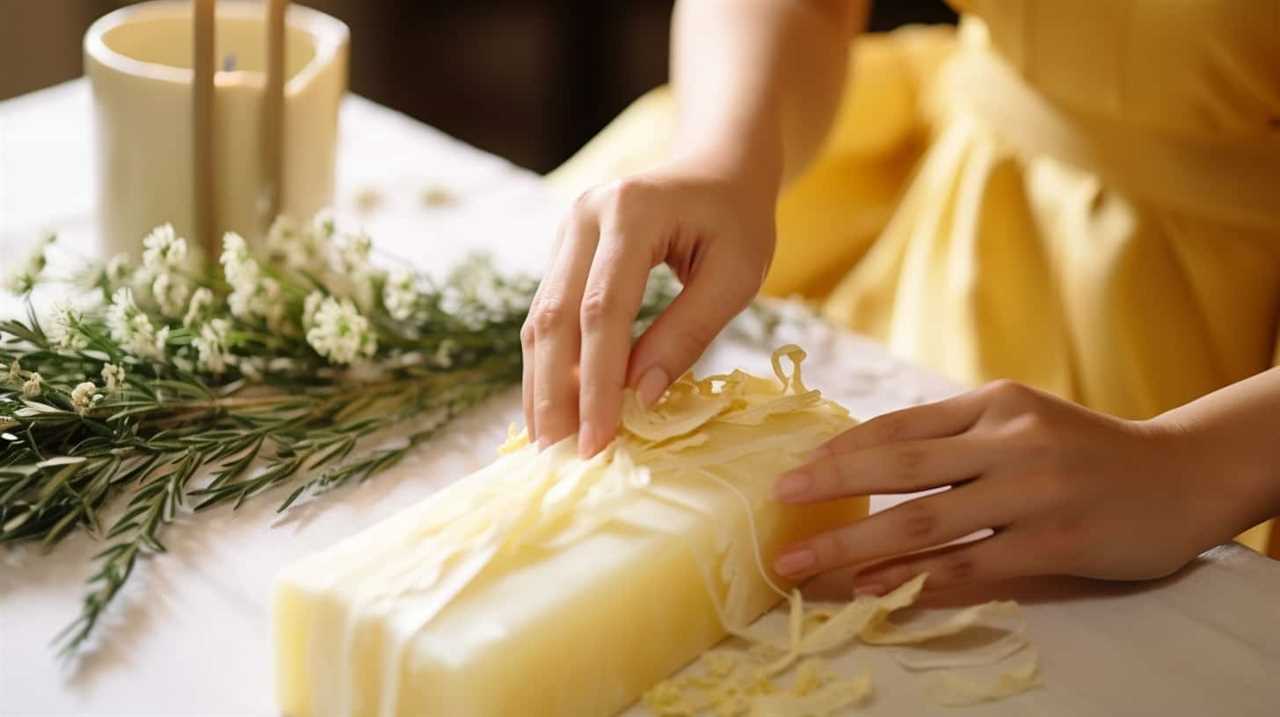
Keep moving the iron and changing the cloth until the wax is completely removed. Be cautious not to leave the iron in one spot for too long to avoid damaging the fabric.
With the wax removed, you can now proceed to the next step of applying dish soap and warm water to eliminate any residue.
Apply Dish Soap and Warm Water
To thoroughly remove any remaining wax residue from the sheets, we’ll now proceed to apply dish soap and warm water. This method is effective in breaking down the wax and lifting it from the fabric. Here are the steps to follow:
- Fill a basin or sink with warm water.
- Add a few drops of dish soap to create a soapy solution.
- Place the wax-stained sheets in the water, ensuring they’re fully submerged.
- Gently agitate the sheets to allow the soap to penetrate the wax.
- Let the sheets soak for about 15-20 minutes.
After soaking, use your fingers or a soft brush to scrub the stained areas. Rinse the sheets with warm water to remove any soap residue. If the wax residue persists, you can try alternative solutions like the hairdryer method or using a cleaning solvent specifically designed for wax removal.

Use a Stain Remover
Next, we’ll apply a stain remover to tackle any remaining wax stains on the sheets. Stain removers are effective at breaking down and removing stubborn wax stains.
To begin, choose a stain remover specifically designed for fabric stains. Apply a small amount directly onto the stained area and gently rub it in using a clean cloth or sponge. Allow the stain remover to penetrate the fabric for a few minutes.
Then, rinse the area with warm water and blot it dry with a clean towel. If the stain persists, you can try using a heat gun on a low setting to melt the remaining wax and then blot it with a paper towel.
Alternatively, you may want to consider using a carpet cleaner that’s safe for use on fabrics. Follow the instructions provided by the manufacturer and test it on a small, inconspicuous area of the sheet before applying it to the stained area.

Remember to always check the care instructions on the sheet to ensure that the stain remover or carpet cleaner is suitable for the fabric.
Try Freezing the Wax
We found that freezing the wax is an effective method to remove it from sheets. Freezing the wax causes it to harden and become brittle, making it easier to scrape off. Here are some alternative freezing methods you can try:
- Place the sheet with the wax in the freezer for a few hours until the wax has completely hardened.
- If you don’t have enough space in the freezer, you can use ice cubes instead. Wrap the ice cubes in a plastic bag and place them directly on top of the wax.
- Another option is to use a cloth or sponge soaked in cold water and place it on the wax. Then, put the sheet in the freezer. The cold temperature will help solidify the wax.
Remember to always use a cloth or sponge when handling the frozen wax to avoid scratching or damaging the fabric.
Scrape off Frozen Wax
After freezing the wax, we can now proceed to scrape off the hardened and brittle wax from the sheets. To remove the frozen wax residue, we need to use effective scraping techniques.
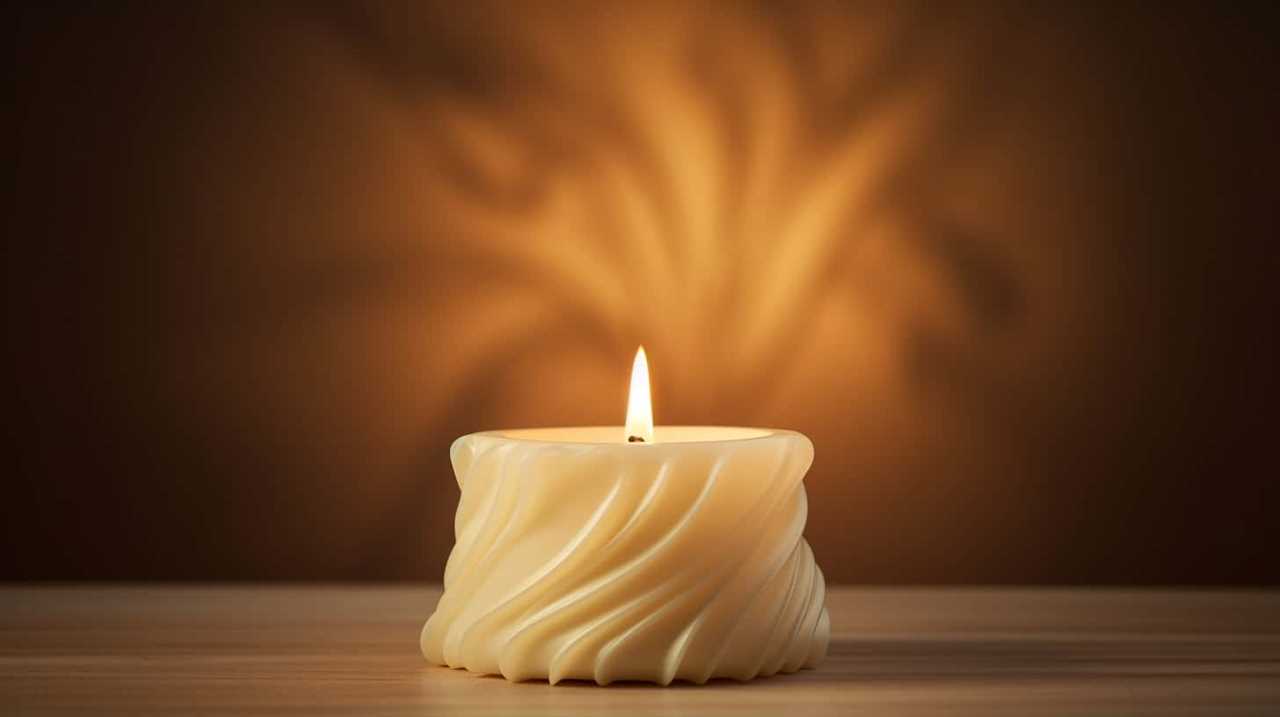
Start by taking a butter knife or a credit card and gently scrape the wax from the surface of the sheets. Be careful not to apply too much pressure, as it may damage the fabric.
Work in small sections and continue scraping until all the wax is removed. If there are any stubborn spots, you can try using a soft-bristled brush to loosen the remaining residue.
Once all the wax is scraped off, you can proceed to the next step in the process of getting candle wax out of sheets.
Use a Hot Water Soak
To begin the process of removing candle wax from sheets, we’ll utilize a hot water soak. This method is effective because hot water helps to melt the wax, making it easier to remove. Here are the steps to follow:
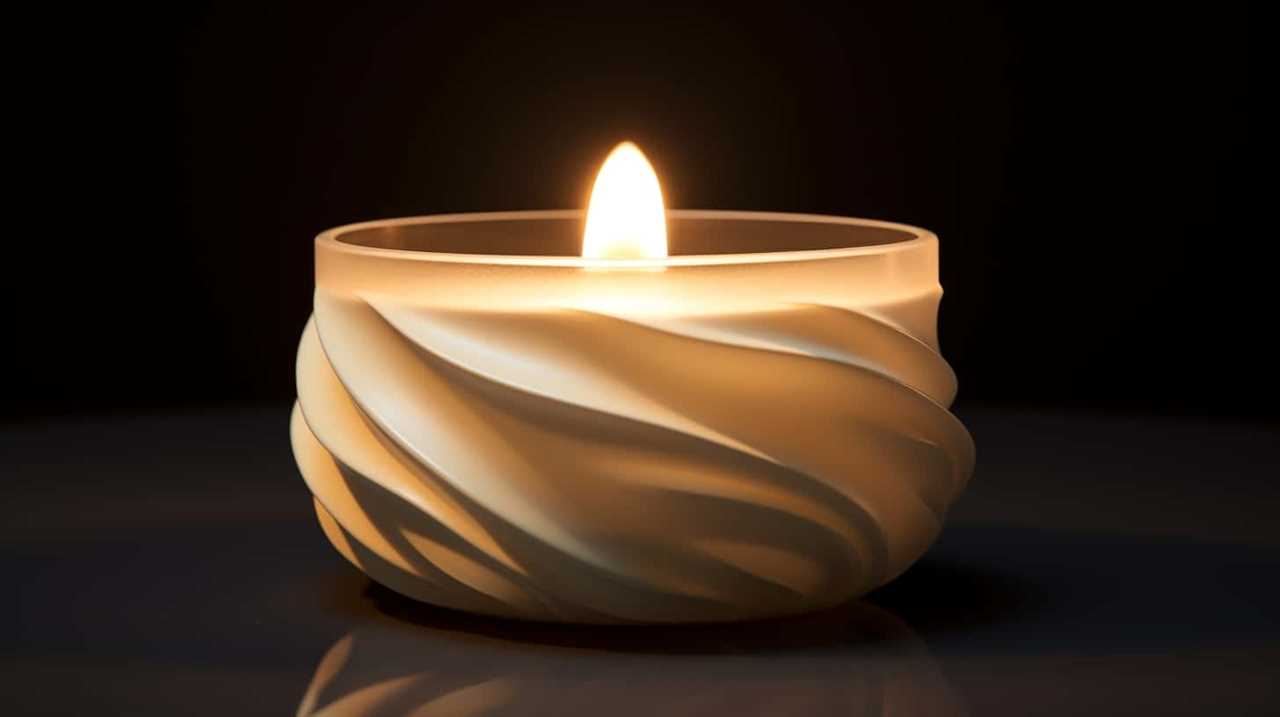
- Fill a basin or sink with hot water: The water should be hot, but not boiling. Submerge the affected area of the sheet in the water.
- Let it soak: Allow the sheet to soak for at least 10-15 minutes. This will give the hot water enough time to soften the wax.
- Gently agitate the fabric: After soaking, use your hands or a soft cloth to gently rub the waxed area. This will help to loosen the wax from the fibers.
Use a Vinegar Solution
For an even more effective method, try using a vinegar solution to remove any remaining residue from the candle wax on your sheets. Vinegar is a versatile household ingredient that can be used in various cleaning tasks.
To make a vinegar solution, mix equal parts of white vinegar and warm water in a spray bottle. Spray the solution onto the wax stain and let it sit for a few minutes. Then, use a clean cloth or a soft-bristle brush to gently scrub the area in circular motions. The acidity of the vinegar helps break down the wax, making it easier to remove.
If you prefer vinegar solution alternatives, you can also try using rubbing alcohol or dish soap mixed with warm water. Both of these options are known for their effectiveness in removing stubborn stains.
Once you have successfully removed the wax using the vinegar solution or an alternative, it’s important to wash and dry the sheets properly to ensure they’re clean and fresh.
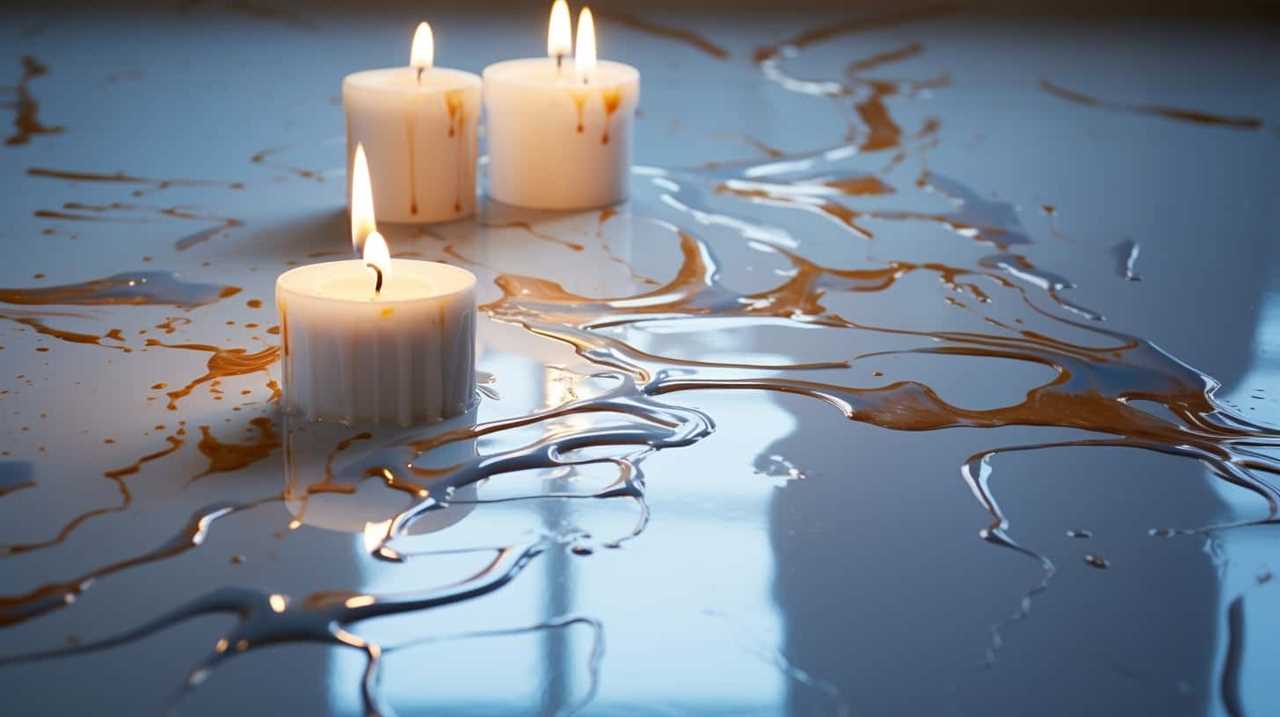
Wash and Dry the Sheets Properly
To ensure cleanliness and freshness, we must properly wash and dry the sheets after removing the candle wax residue. Follow these proper washing techniques and drying methods to maintain the quality of your sheets:
- Sort and separate: Before washing, separate your sheets from other clothing items to avoid tangling and potential damage.
- Use the right detergent: Choose a mild detergent that’s suitable for your sheets’ fabric type to prevent fading or discoloration.
- Follow care instructions: Check the label on your sheets for specific washing instructions, such as water temperature and cycle settings.
- Optimal drying: Hang your sheets outside for natural air drying, or use a low-heat setting on your dryer to prevent shrinking and wrinkling.
- Fold and store: Once dry, fold your sheets neatly to minimize wrinkles and store them in a clean, dry place.
Frequently Asked Questions
Can I Use a Different Type of Solvent Instead of Rubbing Alcohol to Remove the Wax?
We can try other solvents to remove the wax, like vinegar or dish soap. These alternatives might be effective substitutes for rubbing alcohol. Let’s experiment and find the best solution for getting candle wax out of sheets.
Is It Safe to Use an Iron on Delicate or Synthetic Fabrics?
Using an iron on delicate or synthetic fabrics can be risky. Safety precautions are necessary to prevent damage. Luckily, there are alternative methods to remove candle wax from sheets without risking your precious fabrics.
Can I Use a Different Type of Soap Instead of Dish Soap to Remove the Wax?
We can try using a different soap to remove the wax from the sheets. However, it’s important to note that the effectiveness of different solvents may vary. It’s best to choose a soap that is known for its stain-removing capabilities.
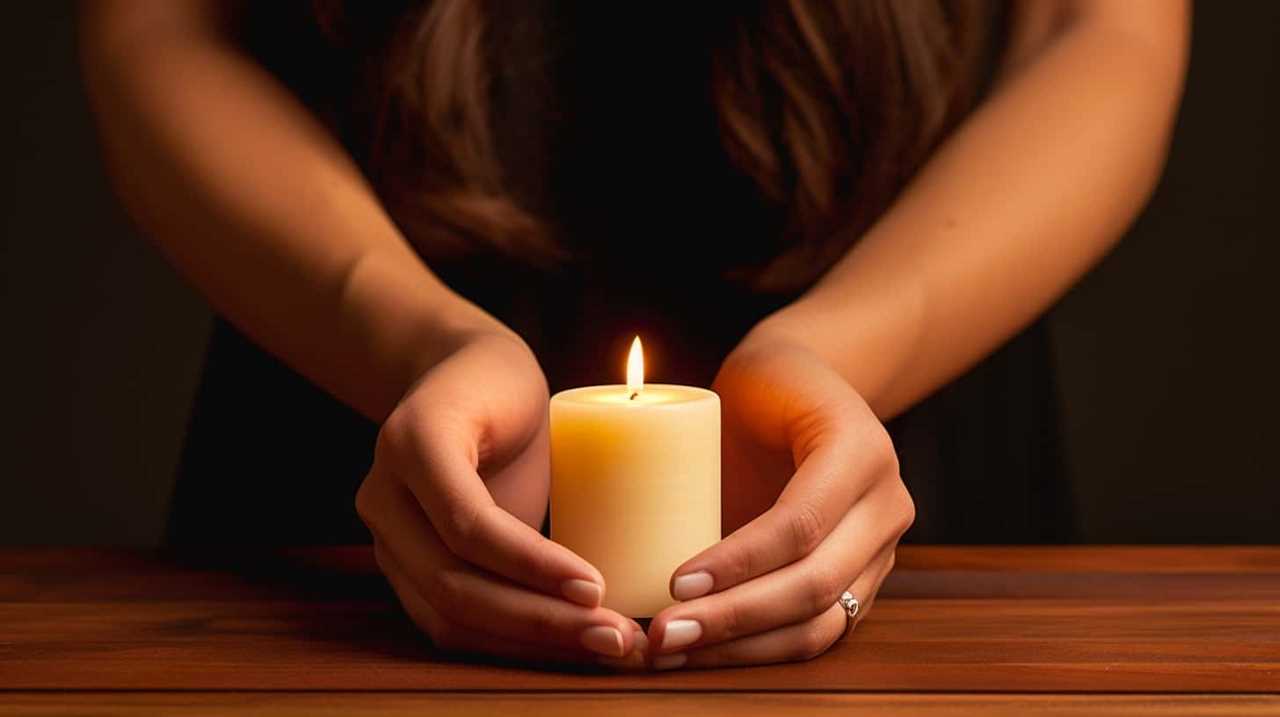
How Long Should I Freeze the Wax Before Attempting to Scrape It Off?
How long is the freezing process for removing candle wax from sheets? Is there a quicker method available? We’ll share a practical solution that involves freezing the wax for about 2 hours before attempting to scrape it off.
Can I Use a Different Type of Solution Instead of Vinegar to Remove the Wax?
We can try using different types of solvents as alternative solutions for removing candle wax from sheets. Vinegar is a common choice, but there are other options available that may work just as effectively.
Conclusion
In conclusion, removing candle wax from sheets can be done easily with a few simple steps.
Did you know that around 70% of people have experienced the frustration of accidentally spilling wax on their sheets?
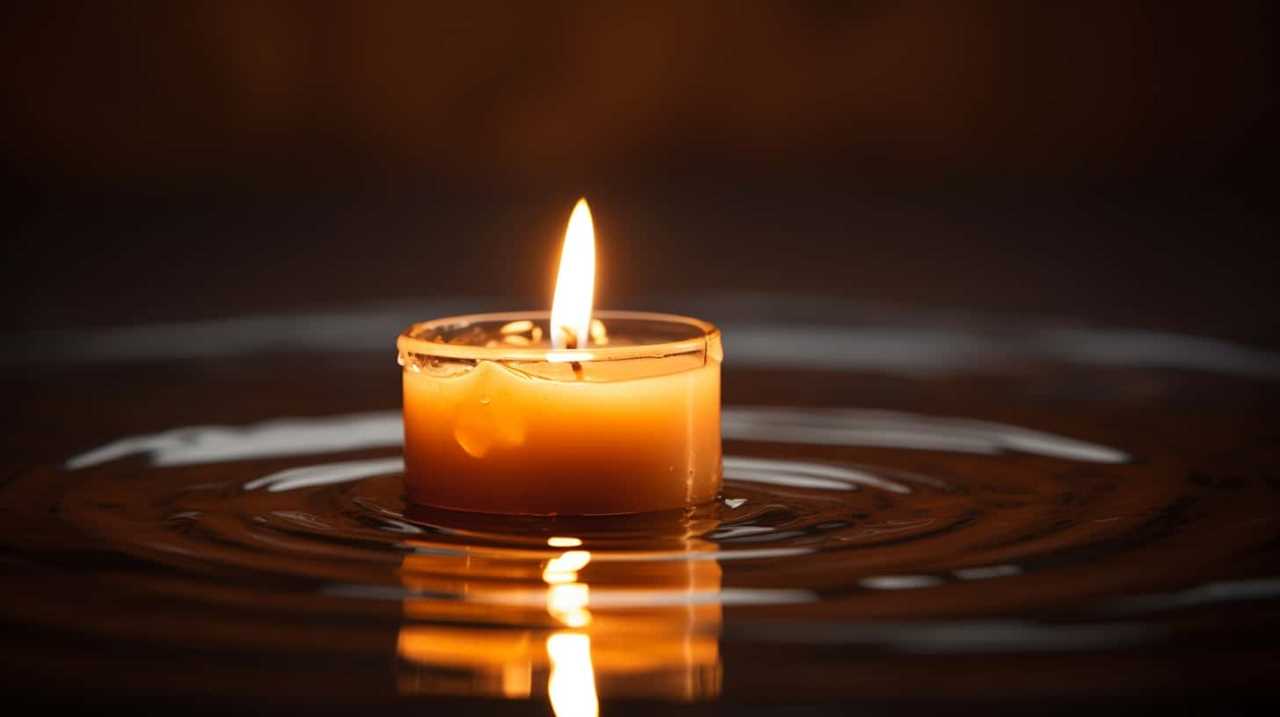
By following the directions provided, you can effectively remove wax and restore your sheets to their original condition.
So don’t worry if you encounter this common mishap, just follow these practical tips and your sheets will be good as new!







